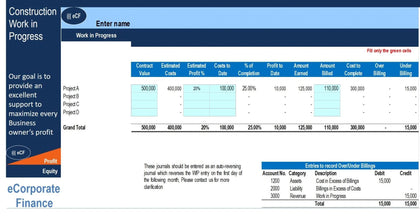eCommerce Valuation Financial Excel Model
The eCommerce Valuation model is a financial projection model with a DCF valuation tailored to the eCommerce industry.
Included in the template you will find:
• The Income Statement, Balance Sheet and Cash Flow Statement
• An Assumptions Section specific to the eCommerce industry with key drivers for the business
• Supporting Schedules Section for Capital Assets and Debt
• Customer Metrics specific to the eCommerce industry
• DCF Valuation
• Graphs to visually display the Income Statement and Cash Flow Statement
First is the Assumptions sections where Assumptions are entered in the cells for the projection periods. All assumptions can be modified to fit specific key drivers of the business to see their impact on the 3 Statement model. All projected years are driven by formulas from the Assumptions section and drive the income statement, balance sheet, and cash flow sections. The Supporting Schedules section is all formulas that are tied to the Assumptions and 3 Statement sections so no editing is necessary. The Customer Metrics section includes metrics specific to the eCommerce industry and is driven by the Assumptions section. Next, the DCF Valuation section calculates the Enterprise Value (EV) of the business based on the financial projections. Lastly, the Charts and Graphs section displays the Income Statement, Contribution Margin, LTV, and Burn Rate visually. The correlating data is above the graphs and tied to the model with formulas so they will automatically adjust to any modifications in the model.
Included in the template you will find:
• The Income Statement, Balance Sheet and Cash Flow Statement
• An Assumptions Section specific to the eCommerce industry with key drivers for the business
• Supporting Schedules Section for Capital Assets and Debt
• Customer Metrics specific to the eCommerce industry
• DCF Valuation
• Graphs to visually display the Income Statement and Cash Flow Statement
First is the Assumptions sections where Assumptions are entered in the cells for the projection periods. All assumptions can be modified to fit specific key drivers of the business to see their impact on the 3 Statement model. All projected years are driven by formulas from the Assumptions section and drive the income statement, balance sheet, and cash flow sections. The Supporting Schedules section is all formulas that are tied to the Assumptions and 3 Statement sections so no editing is necessary. The Customer Metrics section includes metrics specific to the eCommerce industry and is driven by the Assumptions section. Next, the DCF Valuation section calculates the Enterprise Value (EV) of the business based on the financial projections. Lastly, the Charts and Graphs section displays the Income Statement, Contribution Margin, LTV, and Burn Rate visually. The correlating data is above the graphs and tied to the model with formulas so they will automatically adjust to any modifications in the model.































